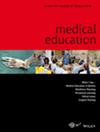Exploring how structural forms of power shape the training of intraprofessional collaboration between family physicians and specialty physicians in outpatient workplace settings
Abstract
Introduction
Intraprofessional collaboration between family physicians (FPs) and specialist physicians (SPs) is posited to improve patient outcomes but is hindered by power dynamics. Research informing intraprofessional training on hospital wards often conceptualizes power at an interactional level. However, less is known about how social structures make these power dynamics possible. This study explores how structural forms of power shape how FP and SP supervisors engage with and teach intraprofessional collaboration in outpatient settings and to what effect.
Methods
Using diabetes as a case study of intraprofessional collaboration, we conducted a discourse analysis of formal documents (written to guide how collaboration should be practiced) and interview transcripts with 15 FP and SP supervisors. Informed by governmentality and the sociology of professions, we analysed how discourses governing diabetes care shape FPs' and SPs' clinical and teaching behaviours, implications for jurisdictional boundaries and the nature of their collaborative relationships.
Results
Discourses of evidence-based medicine construct a hierarchical social structure in medicine that permeates how physicians engage with and teach intraprofessional collaboration. FPs and SPs enact and teach these hierarchical roles when collaborating in the referral-consultation process in ways that establish and reinforce jurisdictional boundaries. The interactions at the intersection of these boundaries foster a form of collaboration characterized by SPs surveilling and regulating FPs' practices.
Discussion
As currently constructed, intraprofessional collaboration in outpatient settings may be practiced and taught in ways that reinforce asymmetric power dynamics between FPs and SPs. Without awareness of this unintentional effect, educational attempts to advance this constructed notion of collaboration may ironically impede the achievement of collaborative ideals. Outlining the processes by which structural power permeates FPs' and SPs' collaborative behaviours opens space for educators to acknowledge and mitigate the effects of social structures on intraprofessional training in other clinical and educational contexts.

 求助内容:
求助内容: 应助结果提醒方式:
应助结果提醒方式:


